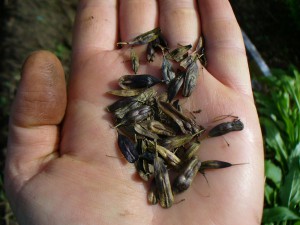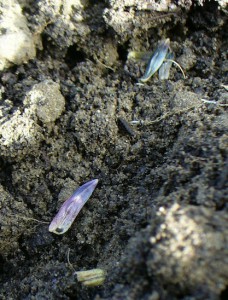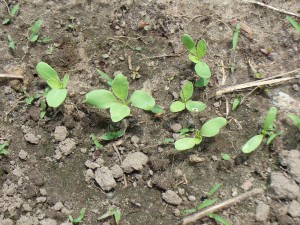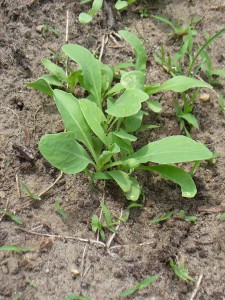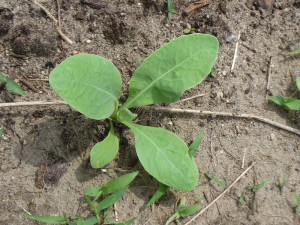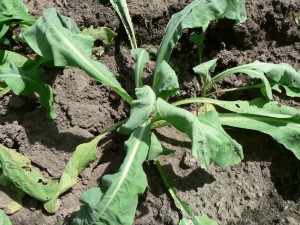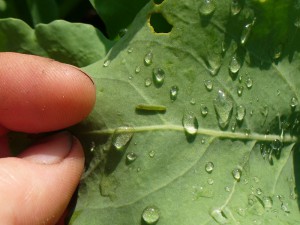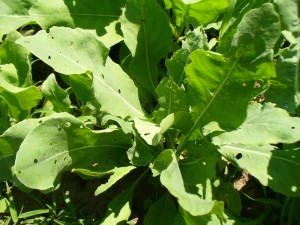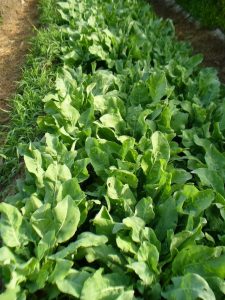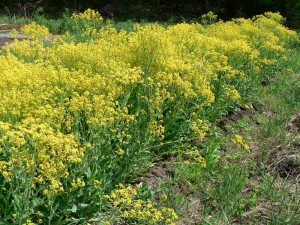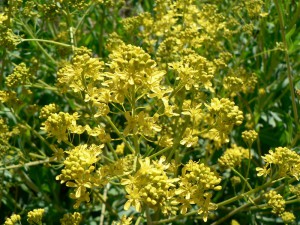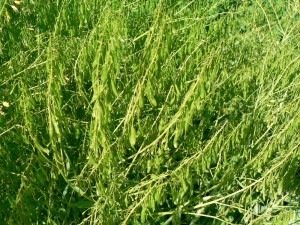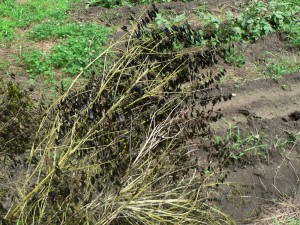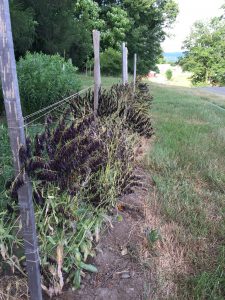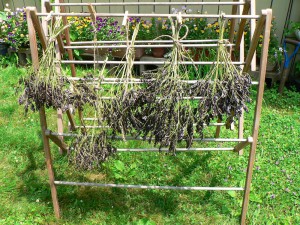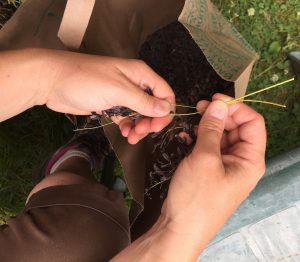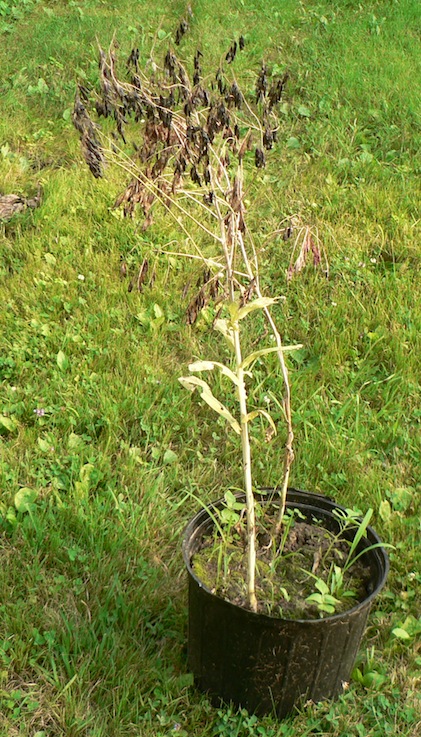To Grow or Not To Grow?
Woad is the easiest source of blue for dyers in the Northeast to grow, since it is perfectly happy with the length of our typical growing season. Other plants that yield blue, including Japanese indigo or dyer’s knotweed (Polygonum tinctorium), require a longer growing season and need protection in the spring and fall. Luckily for those of us in USDA zones 5-6 here in New England, woad is a hardy biennial.
Woad is considered a noxious weed in much of the western U.S., including California, Montana, Wyoming, Utah, Idaho, California, Oregon, and Washington state. The classification “noxious weed” means that it is illegal to grow it because it is considered so detrimental to agricultural productivity. Fortunately it is still legal in Massachusetts and the New England states. Check the laws for your area before you plant it.
I originally bought my seeds from Richter’s Herbs in Canada. I tried both their woad and Chinese woad, and found that the Chinese woad did better in our garden and yielded more color. I have been saving the seeds since 2005. The Chinese woad was labeled Isatis indigotica. So, that is the type I grow. The other common variety of dyer’s woad (probably the better known variety!) is Isatis tinctoria.
Planting and Growing
Woad needs very rich soil to produce prolifically, including generous levels of nitrogen. I usually combine composted manure and compost in the bed. Recently I started using a non-vegetarian natural fertilizer (composed of blood and bone meal among other things) and despite being sad about the animal body parts, I was happy with the results. In addition to the usual nutrients (potassium, nitrogen, and phosphorus) woad also benefits from calcium. You will need to amend the soil in the bed again after you dig up your woad crop, as it pulls a lot of nutrients from the soil.
Woad can be direct-seeded into the garden very early in the spring. Here in the lower elevations of Western MA I can plant woad as early as mid-April. Since the seedlings are frost-tolerant and the plant has a long taproot, direct seeding is easiest. I find that the seeds germinate best if not planted too deeply, about 1/2 inch, though I’ve seen a planting depth of 2-3 inches recommended. Woad likes full sun.
Woad seeds on the soil before burying:
Allow at least 6 inches between plants, and more is better. Rita Buchanan recommends 12-18 inches, and Jill Goodwin recommends 9 square inches per plant. I usually seed freely and thin out seedlings once I see how many germinated. When well-fed, the first-year rosette of leaves will grow to more than a foot wide. Woad will tolerate a certain degree of crowding but the leaves will be smaller on a plant with less space to grow. More plants per square foot will not yield more weight in leaves, and I don’t think small leaves yield as much color. To ensure a steady supply of leaves throughout the summer and fall, plant two beds about two weeks apart.
Woad seedling:
Woad seedlings with more leaves:
Woad seedlings that need thinning:
Woad likes a lot of water and will wilt when it is hot despite its deep taproot. It can tolerate some weed competition but the first-year basal rosette isn’t very tall, so don’t allow the plants to become overshadowed. Too many weeds, especially grasses, make harvesting the woad leaves slow and difficult.
Woad Pests and Diseases
Woad is a brassica, the family that includes mustard, kale, cabbage, and broccoli. It is vulnerable to the same pests and diseases, and benefits from similar cultivation practices.
Rotate the beds you use for woad from year to year. Some places recommend a 5-7 year rotation for brassicas. Woad can suffer from club root, which is another reason to rotate your beds. You might need to add lime to bring up the pH if your soil is acidic. If your woad is suffering from club root, the plants will be stunted, wilted, and obviously not thriving, despite sufficient nutrients and water:
Here are some affected roots:
Mulching suppresses weeds and conserves water, but it also provides shelter for slugs. Around here, slugs are a significant pest for woad. In my experience it is better to weed than mulch woad. Another major woad pest are cabbage white caterpillars. Hyssop is recommended in some companion planting sources to deter cabbage whites. In my experience, anise hyssop attracted pollinators, including cabbage white butterflies, but it did not prevent them from laying eggs on the woad.
Anise hyssop with happy bee:
 For pest control, I look for the little white eggs and caterpillars, and pick them off, but it can be hard to keep on top of this. The caterpillars are hard to see, especially when small. They are the same color as the veins on the woad leaves.
For pest control, I look for the little white eggs and caterpillars, and pick them off, but it can be hard to keep on top of this. The caterpillars are hard to see, especially when small. They are the same color as the veins on the woad leaves.
Here’s a small cabbage white caterpillar:
As they grow, they get much fatter and bigger, but they stay the same light green color. Here’s the cabbage white pupa as it is morphing into a butterfly: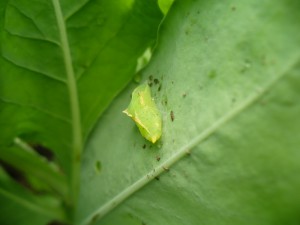
Woad plant with holes from cabbage white chomping:
Woad is a biennial, which means its life cycle takes two years. It has a leafy phase of growth in its first year. The leaves are the part of the plant that produces blue. During its first summer and fall, you can harvest from the same plants several times.
Here’s a bed of woad ready to harvest:
If you wish to save your own seed, let the plants over-winter, bloom, and set seed the second year. You don’t need to mulch them over the winter. The basal rosettes will send up a tall stalk early in the spring with tiny bright yellow flowers. The flowers are powerfully, wonderfully fragrant and incredibly cheery. Woad is one of the earliest plants to flower in the spring around here, around the same time as the wild mustards.
Large bed of woad in bloom in May:
Woad in bloom, close-up:
The flower stalks will set lots of large, wing-like seeds. They start out green:
They turn purplish-black when they are mature a few weeks later:
Often in the spring around here, it is too wet for the seeds to dry completely on the plant. This is especially problematic if the stalks flop over and the seeds get matted on the wet ground. You may need to stake the plants in the spring if you want to save seed. If you don’t harvest seed promptly, the seeds will eventually fall off the plant and self-sow. Unfortunately, this kind of woad-a-palooza isn’t ideal, so you’ll want to avoid it.
The seeds are easy to dry and save. To dry woad seeds fully, cut the stalks when the seeds are mature, and hang them up to dry:
Then strip the seeds off the stems:
Mature woad seeds on one of my first Chinese woad plants:
If you do not wish to seed-save, you can dig up the plants in the winter before the ground freezes, or wait and dig them up in the spring before they bloom. The roots of healthy plants are huge, kind of like parsnips.
Second year leaves will still produce blue, but I’ve read that the yield is less than first year leaves, as the plant is putting energy into its reproductive phase. I have successfully used second year leaves as late as the stage where they have flower buds, but right when they start to bolt is probably more productive. I have also used second year leaves with the boiling water method on alum-mordanted wool, and have obtained purplish-gray and antique rose.

